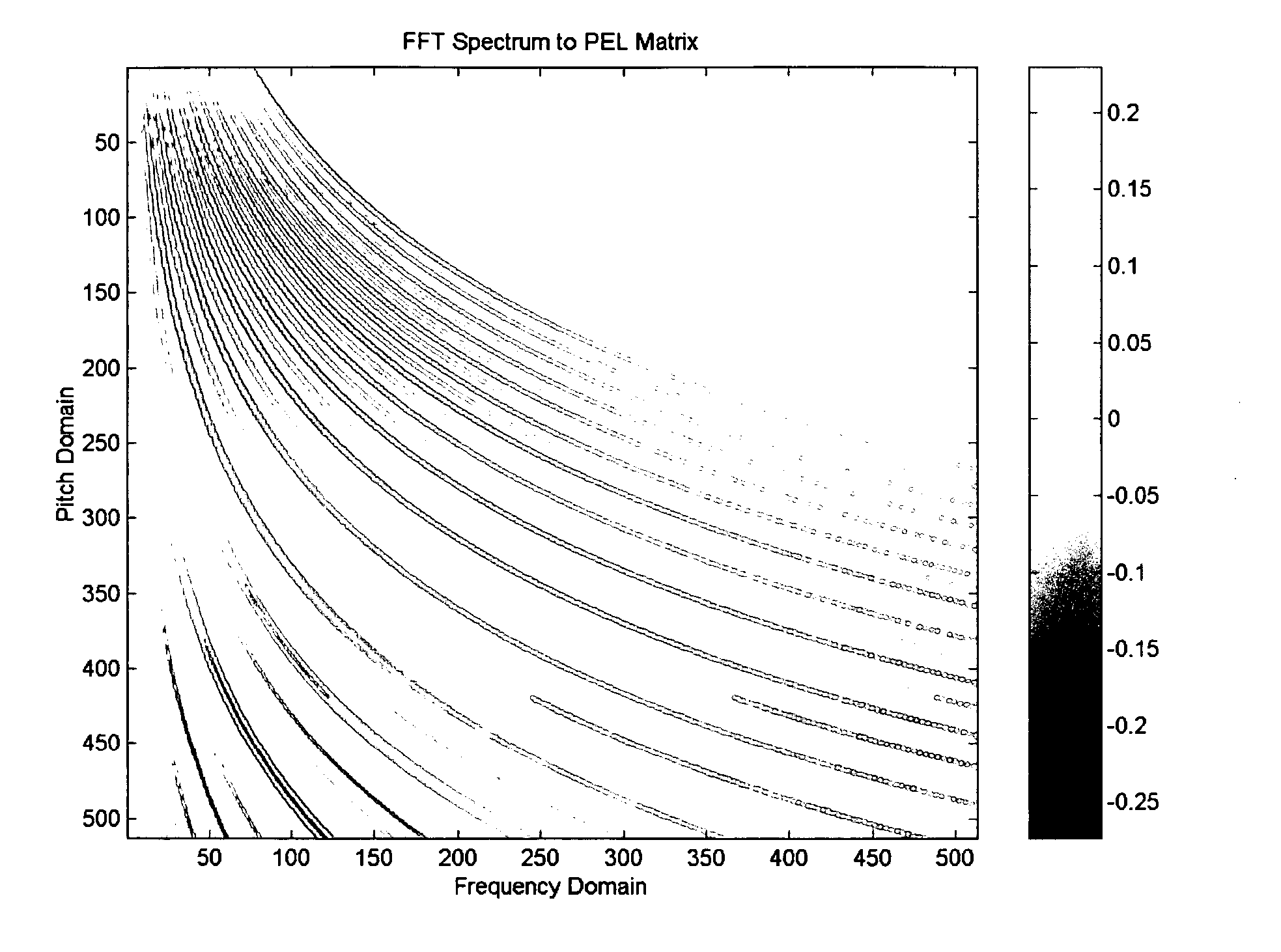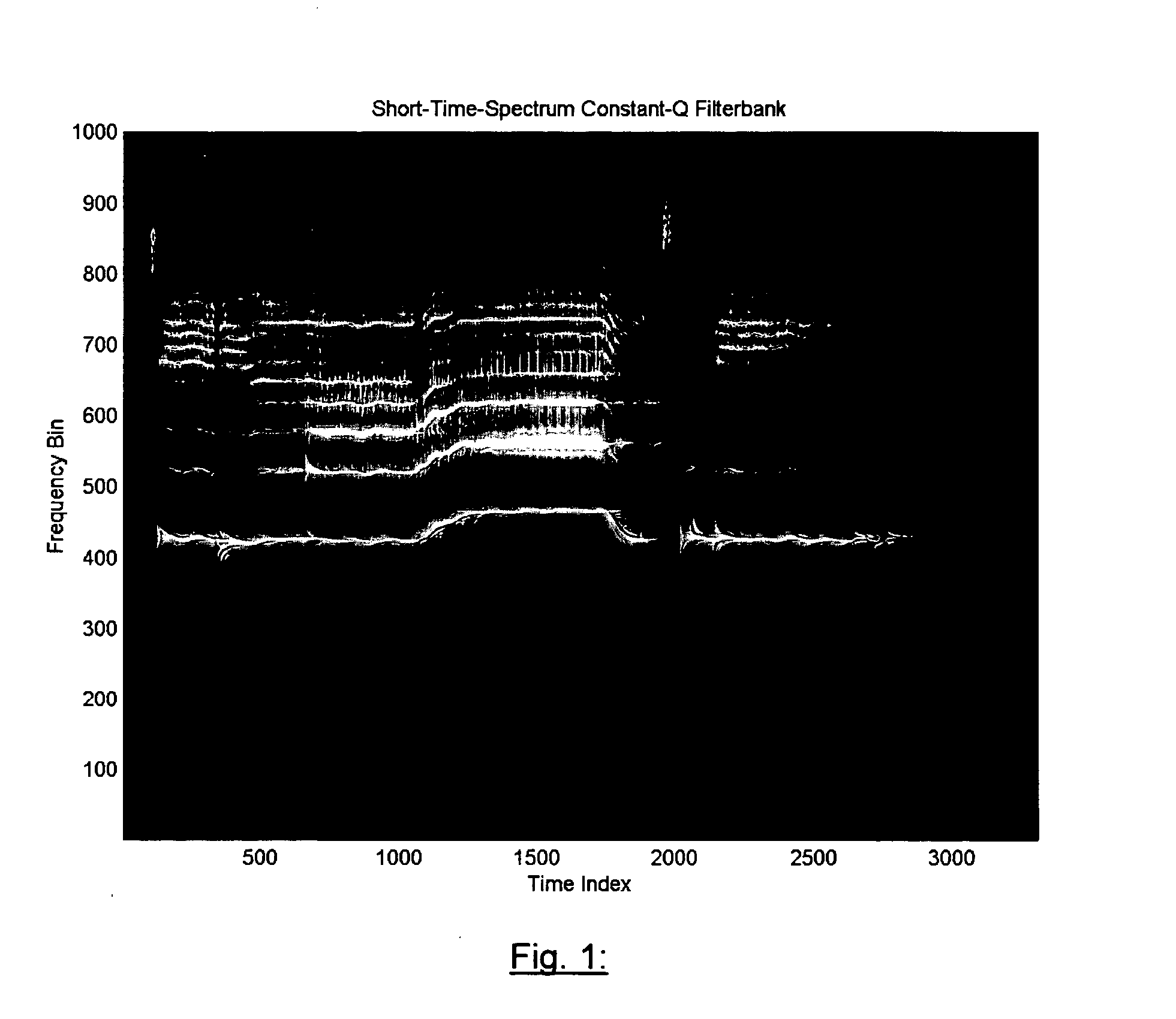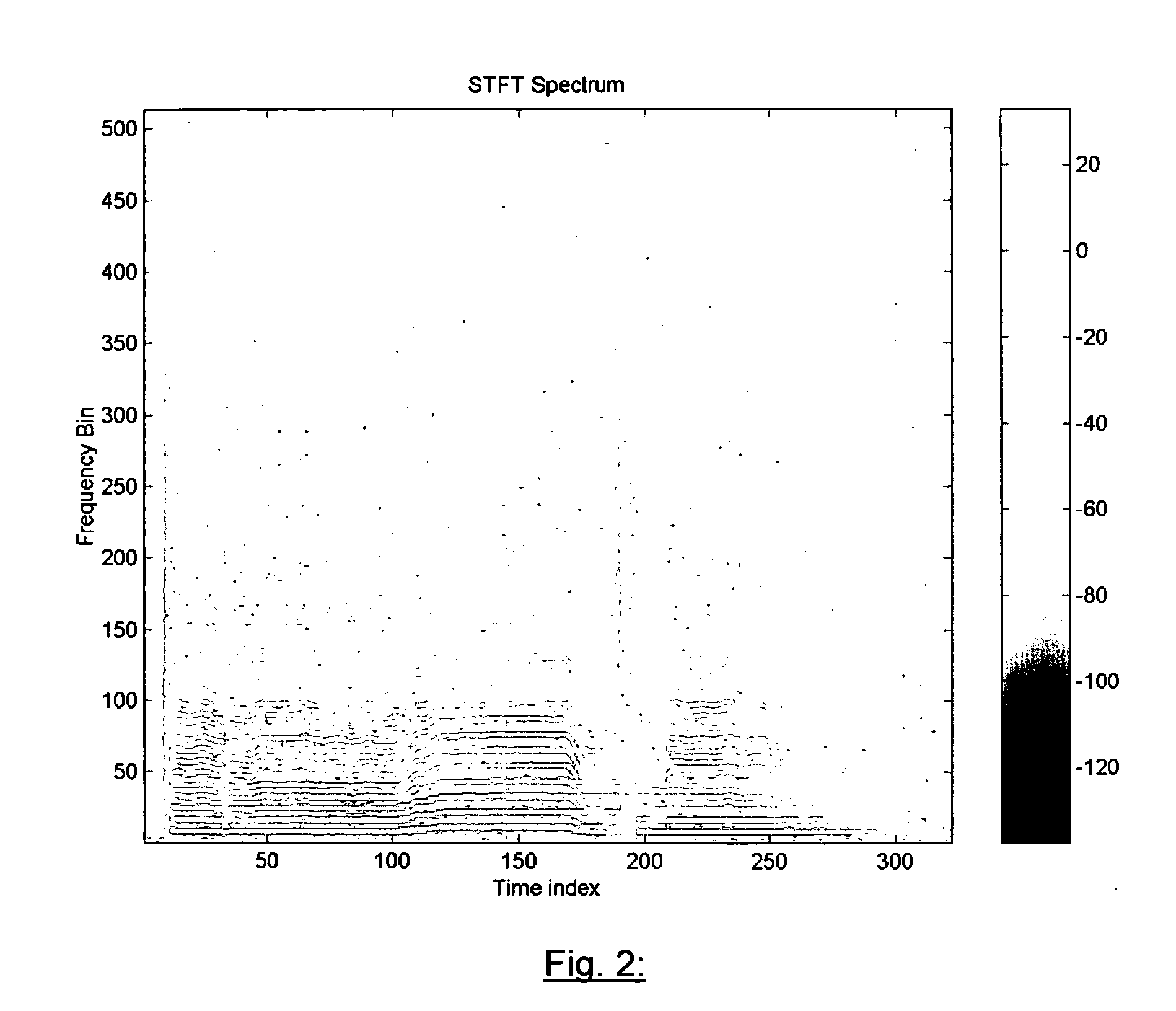Method for analysing audio signals
a technology of audio signals and analysis methods, applied in the field of analysis methods of audio signals, can solve the problems of poor direct comparison results, loss of information that would have been removed in the brain at any rate, and inability to analyze speech,
- Summary
- Abstract
- Description
- Claims
- Application Information
AI Technical Summary
Benefits of technology
Problems solved by technology
Method used
Image
Examples
Embodiment Construction
This object is achieved by a method for analyzing audio signals according to claim 1.
The following terms are used in the description of the invention:
A short-time spectrum of a signal a(t) is a two-dimensional representation S(f,t) in the phase space with the coordinates f (frequency) and t (time).
The definition used for coherence refers to typical characteristics of the autocorrelation function AS of short-time spectra S: AS(t,f)=∫-∞∞S(τ,ϕ)S+(τ-t,ϕ-f)ⅆτⅆϕ
where S+designates the conjugated spectrum. When this function shows predictable behavior for t=0 and f=0, respectively, this is called frequency coherence and time coherence, respectively. This statement regards the whole short-time spectrum S; if one wants to learn something about local coherence, as in the following, only a section of S is used for evaluation.
Filters are defined by their action in the frequency domain. The filter operator {circumflex over (F)} acts on the Fourier transform ℑ as a frequency-depe...
PUM
 Login to View More
Login to View More Abstract
Description
Claims
Application Information
 Login to View More
Login to View More - R&D
- Intellectual Property
- Life Sciences
- Materials
- Tech Scout
- Unparalleled Data Quality
- Higher Quality Content
- 60% Fewer Hallucinations
Browse by: Latest US Patents, China's latest patents, Technical Efficacy Thesaurus, Application Domain, Technology Topic, Popular Technical Reports.
© 2025 PatSnap. All rights reserved.Legal|Privacy policy|Modern Slavery Act Transparency Statement|Sitemap|About US| Contact US: help@patsnap.com



